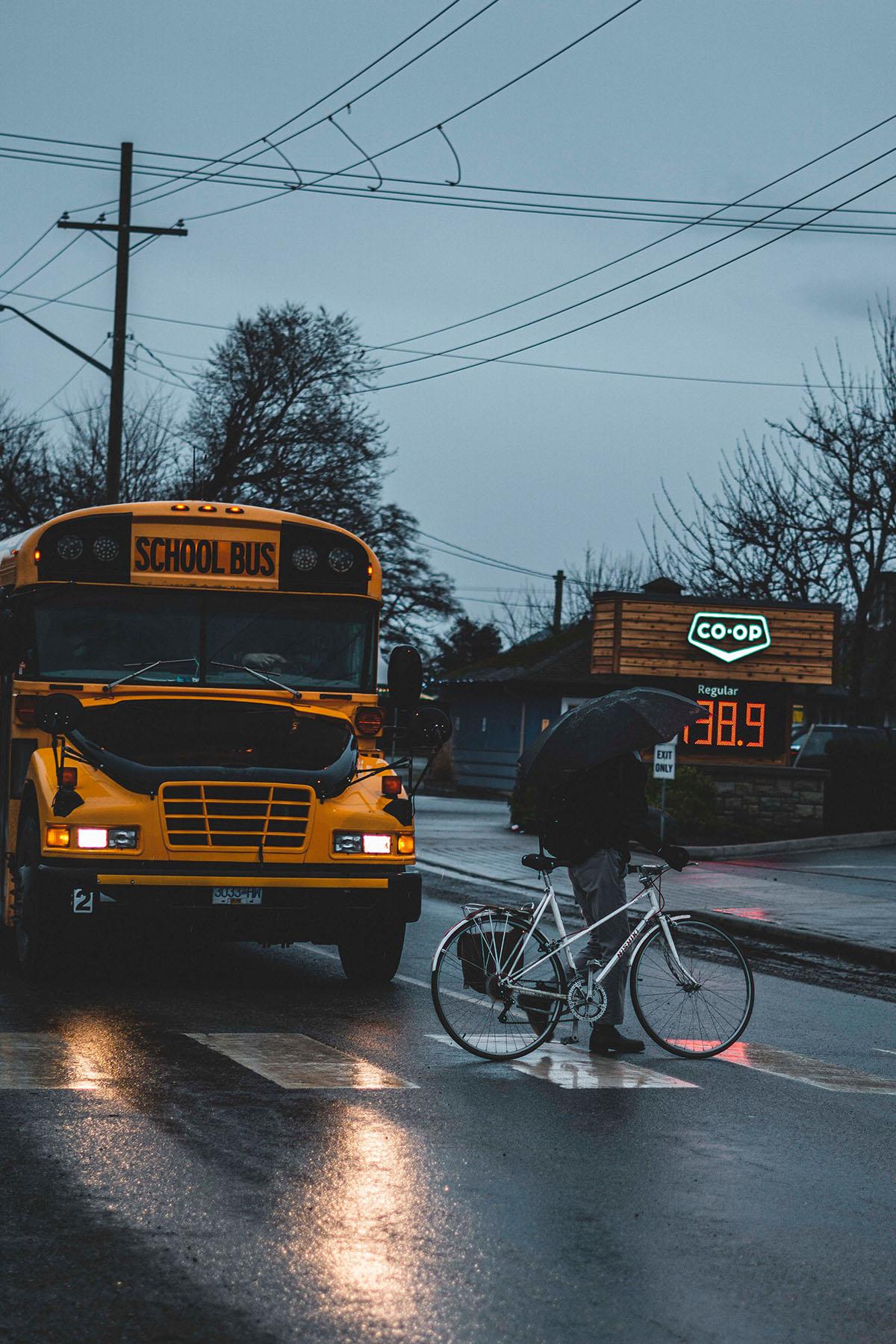What determines a child’s best shot at academic success? For decades, educational policymakers and advocates have pointed to factors like a stable home environment, food security, school choice and academic support as conditions for school readiness and student achievement.
But often absent from those conversations is not what happens at home or at school, but what happens in between. A child’s journey to school—and the obstacles they may endure, particularly for young people of color—is the unspoken experience that can dictate the mindset of a student and their odds of success, before they ever step foot in a classroom. Now, a new paper co-written by Assistant Professor of Urban Studies and Planning Ariel Bierbaum is outlining a framework for investigating the experience of young people as they make their way to school, and the significant role it plays in student outcomes. “Toward Mobility Justice: Linking Transportation and Education Equity in the Context of School Choice” appears in this month’s issue of the Journal of the American Planning Association.
“The travel of students and their experience trying to get to school is much more nuanced than the current research explains, particularly for young people of color,” says Bierbaum. “We must think about all the ways the systems and structures they face in education and transportation are colliding and adding to the cumulative disadvantages they face.”
“Toward Mobility Justice” straddles education and transportation research to shed light on the dimensions of student travel, creating a primer for important research questions surrounding transportation and education equity in the context of school choice. Through a comprehensive review of existing literature, authors Bierbaum, Alex Karner, an assistant professor of community and regional planning at University of Texas at Austin and Jesus Barajas, an assistant professor in the Department of Environmental Science and Policy at University of California, Davis, explore the equity implications of school trips and school choice, perspectives that are intrinsically linked, yet, according to Bierbaum, historically have not been explored in-depth.
“There is a lack of understanding on the complexities of student travel because it falls in the cracks of planning and education research,” says Bierbaum. “Existing school travel research looks at things like mode choice. Existing transportation equity research does not spend a lot of time on young people’s transportation access, and education research tends to look at the ways school choice programs may lead to inequitable educational outcomes. But no one is looking at them together in a multidimensional way. We argue that a mobility justice framework can help us understand these parallel systems and the experiences of those who travel them, not as separate entities.”
The struggle of getting to school first resonated with Bierbaum 15 years ago during her time at the Center for Cities and Schools, University of California, Berkeley, when she worked with high school students in Emeryville, California, to envision better community pathways to school as part of the Y-PLAN initiative.
“We anticipated a lot of factors that might make getting to school hard, like a lack of crosswalks or busy roads,” says Bierbaum. “What we didn’t expect was that a lot of the Black female high school students said they wanted to be able to walk to school without being cat-called or approached as prostitutes. The lived experience of these young women was incredibly hostile, as it is for many young people of color. Traditional travel survey methods do not capture the complexity of that experience.”
The mobility justice framework, Bierbaum explains, attempts to connect those dots by reframing the relationship between school travel and school choice, leveraging specific dimensions of justice that drill down to the origins of disparities and the mechanisms of their endurance. A coordinated practice—one that recognizes the relationship between transportation equity and education equity over time and space—provides the scaffolding for future research and practice. The researchers also emphasize the importance of integrating experiential data in a heavily quantitative field.
“These kids and their parents are underrepresented stakeholders and their experiences are a vital part of this conversation,” says Bierbaum.
The team hopes to use this paper as a launching point for new research questions and regional case studies. Through the American Planning Association’s Public School Interest Group and other networks, they have started conversations with practitioners in municipal government, school district planning, and scholars.
“Our objective is to help planners and educators see how they can work collaboratively. We want to help researchers and practitioners think more critically about the local-to-global nature of these problems and about the histories of decisions that pile on to inflict harm on communities of color. We all contribute to setting the conditions for learning outside the school walls and, according to some experts, these conditions account for the majority of what shapes young people’s success in school,” says Bierbaum. “There are downstream effects to what those conditions are and we need better tools to make sense of that.”

